As the world around us grows more unstable, we as preppers have recognized the need to be prepared if SHTF. One of our major concerns is having enough food to feed ourselves and our families long-term and there are two issues that stand in our way.
First, it’s tough to grow food in urban areas because of space limitations and government regulations. You already know how the government is using different regulations aiming to ban self-sufficiency.
Second, regardless of where we live, we don’t want everybody to know that we have food stored away because if things go sideways, it will be every man for himself and hungry people are desperate people.
The solution to both concerns is learning unconventional, sustainable ways to grow food under the radar. I’ve done my homework and have some solutions that I’d like to share with you.
Growing “Ornamental” Food

Growing food that looks ornamental has two major advantages over growing a traditional garden. First, it satisfies urban or home owner’s association requirements for an attractive yard. It also produces food in a way that your neighbors won’t likely notice.
There are many ornamental, edible plants that you can grow in raised beds, as ground cover, in vertical beds, or as trees and bushes. Plants such as strawberries, peppers, berries, cabbage, tomatoes, herbs and fruit trees are all examples of ways to grow ornamental food that supplies you with edibles in a manner that people won’t even suspect.
We’ve outlined a couple of these methods here, and here.
Grow Food Indoors
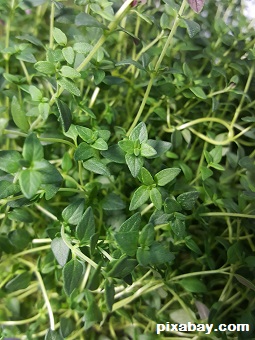
Believe it or not, you can grow plenty of food inside, even if you don’t have much space.
Though you may not be able to grow enough to sustain yourself completely, what you grow will certainly add to your stockpile.
You’re going to be surprised by some of the ideas that I’m going to suggest.
You have the obvious ways, of course. You can grow plants in planters, window boxes and hanging baskets. A few examples of food that can be grown indoors includes herbs of any sort, tomatoes, oranges, carrots, and peppers.
Examples of not-so-common ways to grow food inside include using hydroponics, which don’t require dirt, and aquaponics. You can actually grow plants and edible fish and plants in your fish tank!
Growing food inside is the ultimate way to keep nosy neighbors and interfering governments and associations out of your garden and you can grow food year-round for both food and medicine.
Privacy Fences and Shrubs

Though this isn’t a fool-proof way to keep neighbors from peeking at what you’re doing, it IS a good way to keep roving strangers in the dark, especially if you’re using plants that are ornamental as well as edible.
Who’d think that those beautiful hanging and vertical plants are actually food sources?
Grow a Roof-Top Garden

Don’t laugh – would YOU look on somebody’s roof for food? Probably not, and neither would most other people. Especially considering that most people who are unprepared likely haven’t researched creative ways to grow food, a roof-top garden is going to be completely out of their line of sight.
But believe me when I tell you that it’s possible, and it’s not rocket science!
Growing a roof-top garden only requires a flat roof. It can be your barn, your apartment building roof, or any other roof that you have on your property. If you’re building a new structure on your property, consider building it in such a way that you have an out-of-sight place to grow some container plants.
If the roof is sturdy enough to hold dirt, and is under your control, you can actually put an entire garden up there.
Aquatic Gardening
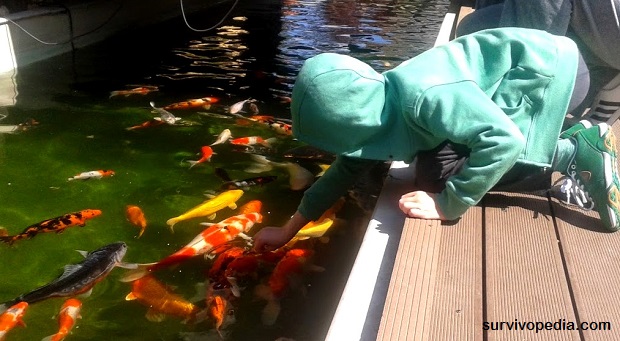
You know that pond you have out back? Oh wait, you don’t have one? Then how about building one? Even a koi-style pond can be used to grow food hydroponically or aquaponically.
There are many aquatic plants and fish that can be grown in a relatively small space. You can even grow standard plants using aquatic gardening by planting them in floating planters.
Best of all, nobody would suspect that your entire beautiful pond is a food source for you. If you do your research, you’ll find that many aquatic plants are packed with vitamins and minerals, and you can use a variety of edible creatures including fish, shrimp, and snails.
The water in your pond is also a great fertilizer. Oh, and you can do this indoors on a smaller scale.
Underground or Basement Gardening
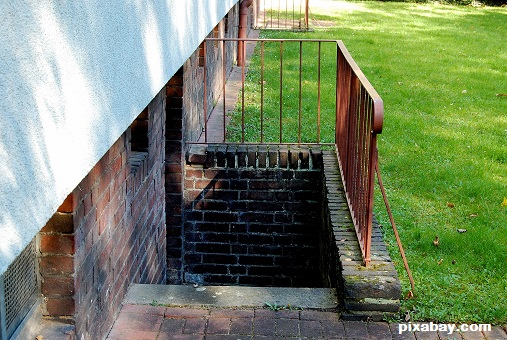
We’ve all heard about people growing pot in their basements or closets using grow lights so why can’t we carry that over to edible plants? If you have a basement, cellar, large building or even a shed, you can grow food without sunshine using grow lights. Your neighbors will never be the wiser.
Oh, and what about this: growing food in your bunker? Even if the lights go out when SHTF and you have to go underground, you’ll have the food that’s currently growing in there to provide food until the plants die from lack of light. You could always use solar panels to keep your grow lights on, too.
Or, you can transplant your plants into secret places around the property (i.e. in the woods around your house) and nobody will be any wiser. That brings us to the next method.
Wild Gardening
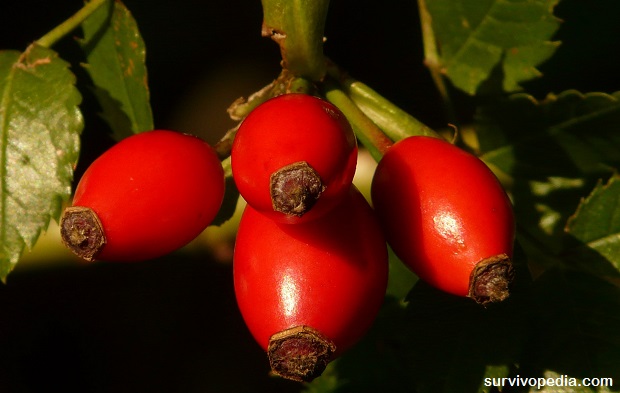
There are hundreds of edible plants that most people would never think of as food. You can always plant these around your property so that you have food where other people see weeds or inedible flowers or trees.
You can even scatter traditional food plants throughout your property in smaller plots so that if one is discovered, you have other plots that will sustain you.
Vermiponics

This is a relatively new concept that combines hydroponics (growing plants without soil), vermiculture (creating fertilizer using worms) and aquaculture (raising fish or plants using water). In short, vermiculture is a self-sustaining way to grow both plants and fish without soil.
There are numerous benefits to this process. Fish and worms both produce waste products that make excellent fertilizer. The plants that are grown are packed with nutrients and grown without chemical fertilizers. The system can be set up in a relatively small space and is a circular growth cycle that constantly produces two food sources simply by maintaining the system.
I learned about vermiponics from a report that details the process from start to finish – see my review here.
Hedge Gardening
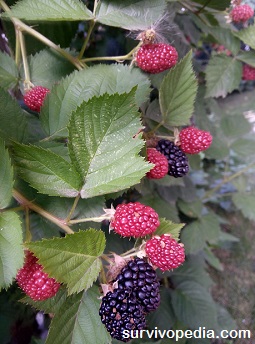
This one isn’t quite so much on the down-low as it is sneakily hiding your plants in plain sight.
If you have hedges, you can also plant edibles throughout them that will blend right into the hedges.
Berry bushes, cucumbers, peppers, potatoes, carrots and rhubarb are just a few plants that pop to mind when thinking about this.
Figuring out how to grow food to feed your family without looking like a survival beacon to those who don’t prepare isn’t that hard if you’re just willing to put on your thinking cap and think outside of the box.
There’s nothing saying that you can’t have your greenhouse and garden to grow food for now, and you can even hide them on the back of your property so that others are less likely to see them, but it’s always a good idea to have a backup plan.
As a matter of fact, having an obvious garden may serve as a great decoy to keep people away from your other methods. Remember that people aren’t going to be thinking of methods other than the obvious because they haven’t put any effort into prepping. They’ll see your garden, raid it, then assume they’ve gotten all that you have.
I’d also like to point out that it’s good to store your preserved foods in more than one place. If you’re planning on bugging out, you likely have places where you’re planning to stop for the night, or use as a safe place to stay or to meet up with the rest of your family. Stock some food in these places even if it means digging a bit of a hidden cellar or just burying the food.
If you have any other good ideas about growing food on the down-low, please tell us about them in the comments section below. If we all put our heads together and share ideas, then we’re stronger as a community.
This article has been written by Theresa Crouse for Survivopedia.




























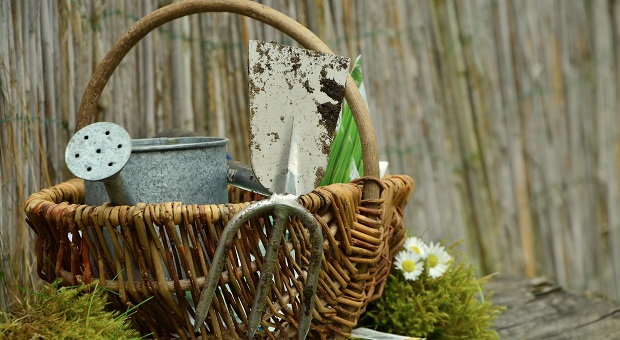








































I am a gentleman of 85 yrs. and sound of mind — I need a project like this — Send all hardbound please- Clay
Thank You so much. I need all the information I can get on growing food. GOD Bless You and Yours. Connie.
As a youth we had ‘Victory gardens’, that the feds encouraged durning WW2 & the Korean war, now we’re too lazy to maintain them,but should of never gotten rid of them. We can grow just about any thing any where with the right seeds & attitude. We should also attempt to recognize what plants are useable that most people consider as a weed. Several make great teas>
Victory gardens were great during WW2 as the government encouraged them, but today it’s different. The fed government has SWAT teams that raid home gardeners.
Thanks for the emails. I appreciate your time and efforts. I’ve incorporated a sprouting-garden in my preparations. The Chinese railroad workers, in the 1800’s, used sprouting to prevent skirvy…. The seeds can be used as bait to catch birds and rodents.
Avoiding planting fruits that are a bright color: like red tomatoes being a beacon giving away it’s location. Many heirloom fruits and vegetables are a darker or less visible fruit color. They blend in much better!
Your utility supplier knows about how much electricity your home should use. They have thousands of “comps”. If your usage is higher than it “should be” or suddenly spikes, they will narc you out to the JBTs (Jack Booted Thugs AKA cops).
As a kid growing up on the farm I often hated gardening. But my Dad only made us weed until the plants were well established. I have never eaten pig weed but have heard it is edible. (chicken manure grows some good specimens of it) We always had some of the biggest vegetables around. I once took in a beet that my Home Economics teacher thought was a turnip. Then she was sure it would be woody. Nope it was perfect all the way through. Now a big spring treat for us was dandelions. Boiled with a small piece of salt pork they are a tasty green. But do not include any buds as they are bitter. the roots can be pealed and eaten also.
Edible weeds are great “on the down low” ways to eat well. Chickweed is full of vitamins A, B, and C. Dandelion leaves and roots, Jerusalem artichokes, onion grass, red clover, alfalfa, kudzu roots for thickening agent for soups, clovers, honey suckle flowers , chamomile, coltsfoot leaves burned to ash make a salt substitute, ginkgo leaves, lemon balm, and so many more make delightful additions to salad or make good teas, and mostly look like weeds ..
When purchasing those grow lights, pay for them with cash, seems the police will come visit you if you use a credit card.